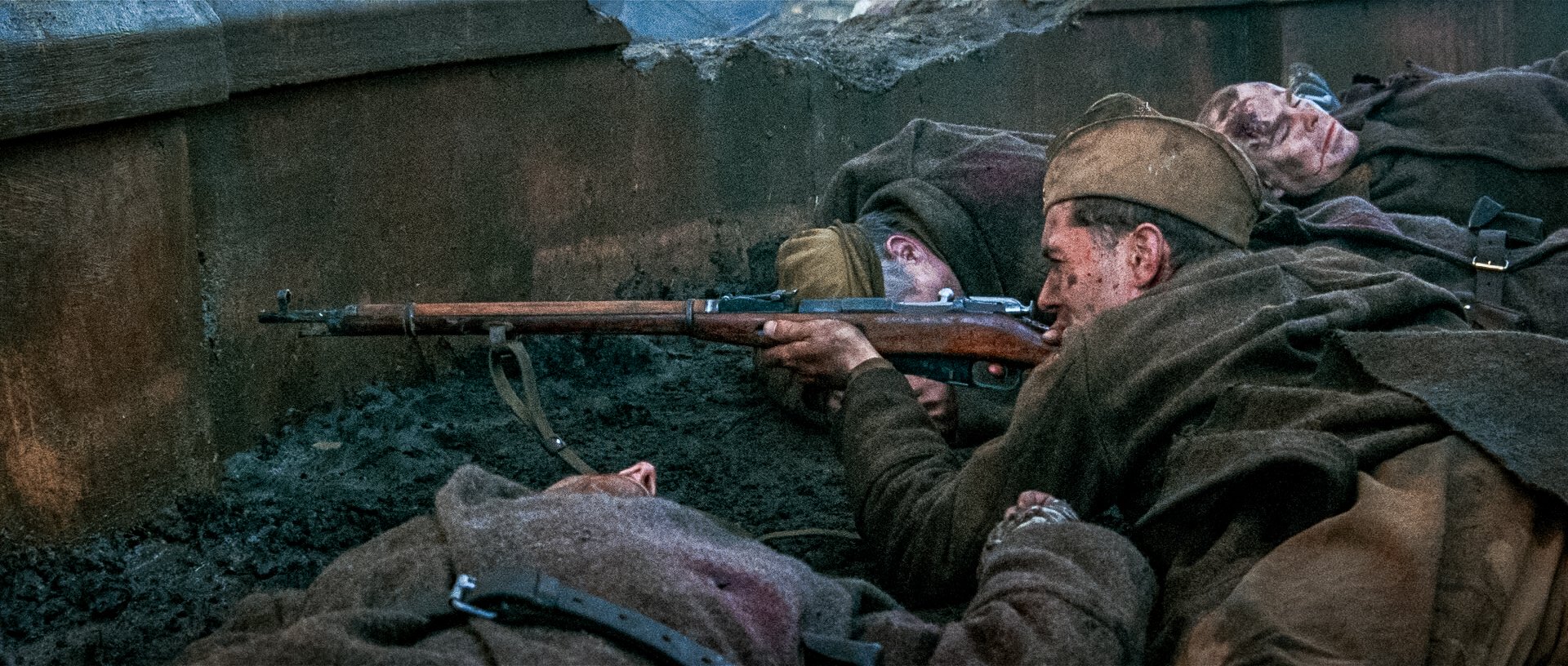
Vasily (Jude Law) aims the Mosin Nagant in 2001's “Enemy at the Gates.” Screenshot from imfdb.
When acclaimed French director Jean-Jacques Annaud put together a star-studded cast for his 2001 film Enemy at the Gates, he combined two classic Hollywood formulas: war movie and love triangle. But the simplicity of that structure is deceptive.
At its core, this is a movie about propaganda during World War II and the unique horrors of the Battle of Stalingrad. The film spotlights how real-life Russian sniper Vasili Zaitsev (Jude Law) was used to promote the Soviet Army’s efforts during the months-long battle to keep the country from losing hope as the bloody siege with the Germans dragged on through the winter of 1942-1943. However, Annaud somehow loses sight of how thoroughly he has bought into the very propaganda system his film aims to question.
The director also felt it was necessary to add a fictional German sniper to face off against Vasili amidst the city’s ruins and up the jealousy tension — because apparently the epic battle wasn’t dramatic enough.
Despite its many historical inaccuracies, Enemy at the Gates holds up and is among the most badass sniper movies ever made. It’s also one of the few modern American films to depict the horrors of Stalingrad — which it does pretty damn well.
Saving Private Ryan Meets Shakespeare In Love
The early 2000s were a hell of a time for war epics, as big-budget flicks made even bigger splashes with their Who’s Who of Hollywood casts and steadfast refusal to let historical fact stand in the way of a good story. Enemy at the Gates’ retelling of a Russian and a German sniper chasing each other through a World War II-era saga of love and war is no exception.
The war film’s release quickly followed star-making performances from Joseph Fiennes and Jude Law in their Oscar-bait films Shakespeare in Love and The Talented Mr. Ripley, respectively. Joining them are Rachel Weisz as the fulcrum of the film’s love triangle, Ed Harris as a grizzled German sniper, and Bob Hoskins sporting a spectacular fake schnoz to pass as Nikita Krushchev.
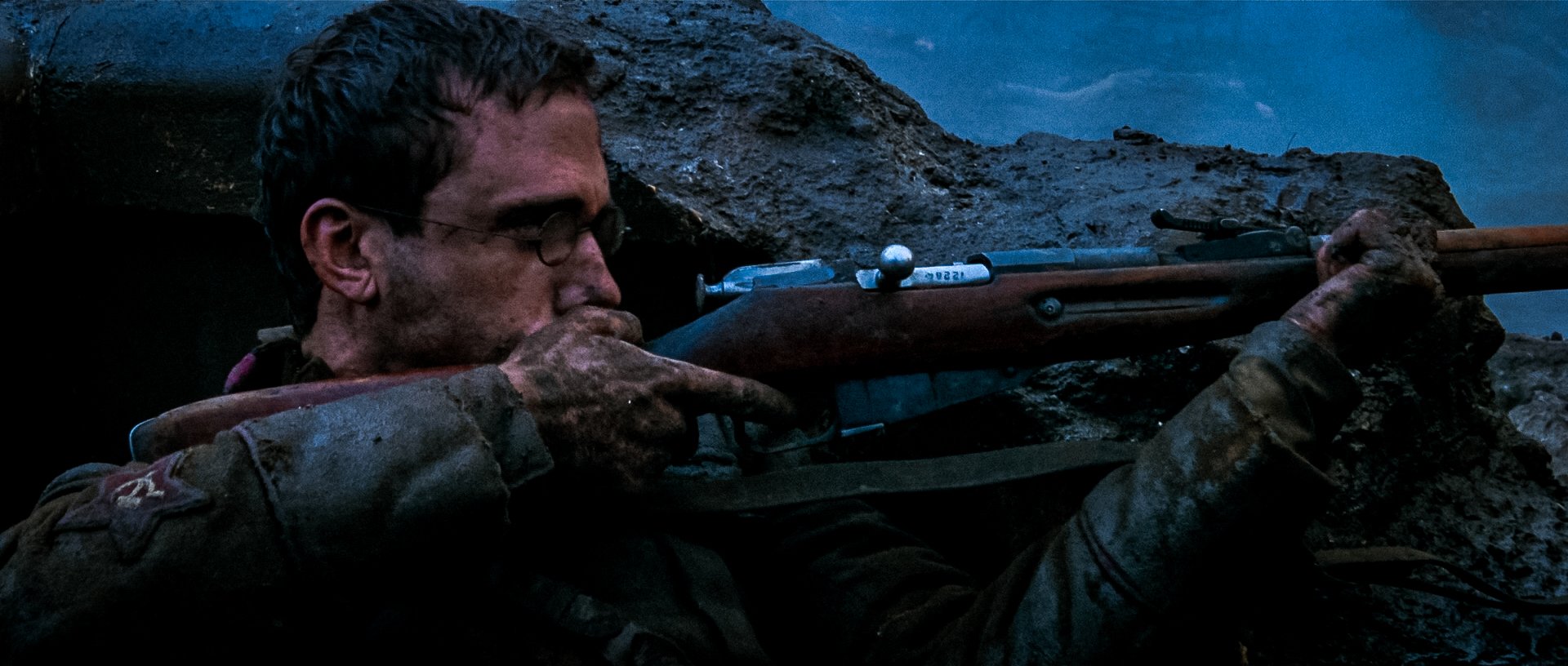
Junior Politruk Danilov (Joseph Fiennes) aims an M91/30 rifle at the Germans in Enemy at the Gates. Screenshot from imfdb.
Clocking in at a decidedly bloated 131 minutes, Enemy at the Gates perfectly fits the mold of a turn-of-the-millennium prestige picture. The movie is strong out of the gate, with an unsparingly violent sequence depicting the young soldier Vasili Zaitsev’s arrival at Stalingrad.
Soldiers streaming from train boxcars are immediately strafed by German planes as they cross the Volga River; those who attempt leaping from their boats in terror are shot by superior officers. Every other soldier is handed a rifle, while the unarmed men are simply directed to pick up a weapon if the armed soldier nearest to them is cut down.
The new troops charge into battle, and Zaitsev (Law) finds himself pinned down near political commissar Danilov (Fiennes) and saves the officer’s life with his shooting aptitude. Officer Danilov, in turn, essentially becomes Zaitsev’s hype man, convincing his supervisor Khrushchev to promote Zaitsev to a sniper position and using him as the centerpiece for a propaganda campaign.
As leaflets adorned with Jude Law’s beautiful mug begin carpeting the Eastern Front, Germans get word of the enemy’s deadly sharpshooter. Nazi leadership decides to send Maj. Erwin Konig (Harris), head of their sniper school in Berlin, to cut down this troublesome soldier and strike a blow to Soviet morale.
While the two snipers chase each other across the blighted landscape, Danilov and Zaitsev both fall for Tania Chernova, a gorgeous female academic-turned-sniper. Predictably, only one man can win her heart, with the spurned man’s capricious behavior leading to tragedy. As love stories go, it’s pretty rote.
Zaitsev comes to resent being used in Soviet propaganda, not buying his own press and rightfully fearing it will harm the people he cares about. In the end, the Soviets win, the Nazis lose, love conquers all, and the credits roll over a swelling James Horner theme.

Maj. Erwin König (Ed Harris) looks out with his Karabiner 98k sniper rifle. Screenshot from imfdb.
At the moment, Enemy at the Gates can be viewed with a Paramount+ subscription or rented for $3.99 on the major video rental sites.
A Hero Of The Soviet Union
Enemy at the Gates is partially based on William Craig’s Enemy at the Gates: The Battle of Stalingrad. The book is a larger exploration of the events in Stalingrad during the winter of 1942-1943, but Annaud and co-screenwriter Alain Godard drew specifically on Vasily Zaitsev’s story for the film.
The movie implies Zaitsev was totally green when he arrived at the front; in reality, Zaitsev had been in the Soviet military since 1937. He was originally a clerk in the Soviet Navy’s Pacific Fleet but volunteered for the Soviet Army after Germany’s Soviet Union invasion in 1941. He began his army service as a senior warrant officer due to his previous navy service, and he was assigned to the 284th rifle division in the summer of 1942.
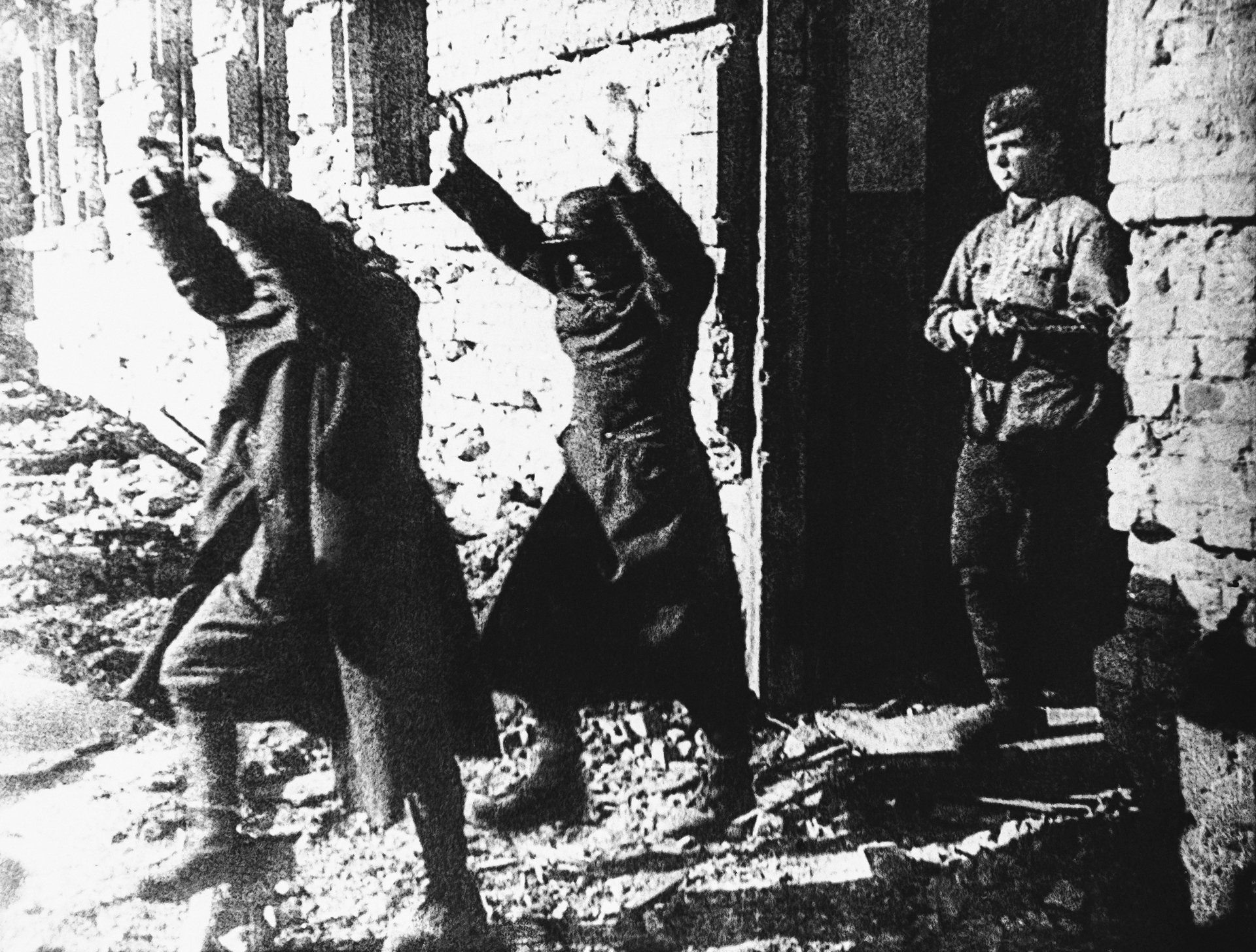
In this file photo taken on Feb. 22, 1943, two Axis soldiers are marched out of a battered building in Stalingrad, Russia, followed by one of their Russian captors. AP file photo.
Zaitsev immediately showed his prowess as a rifleman, killing 32 German soldiers using only iron sights. He learned to shoot from his grandfather as a child, hunting wolves in the Ural Mountains with a .20-gauge shotgun, as portrayed in the film.
After that deadly sharp-shooting earned him a medal for bravery, Zaitsev was handed a M1891 Mosin Nagant bolt-action rifle chambered in 7.62x54mm and equipped with a PU sight with a four-power telescope. Partnered with a spotter named Nikolai Kulikov, portrayed in Enemy at the Gates by Ron Perlman sporting a silver-grilled grin, Zaitsev went on to reportedly kill another 225 Germans during the Battle of Stalingrad.
A January 1943 mortar attack damaged Zaitsev’s eyes, putting an end to his prolific sniper career. But he simply moved on to training other marksmen, then returned to the front. He ended his career at the Battle of the Seelow Heights, attaining the rank of captain. His awards included the Order of Lenin and the Gold Star Medal; he was also named the Hero of the Soviet Union.
A Cat And Mouse Game — But Is It True?
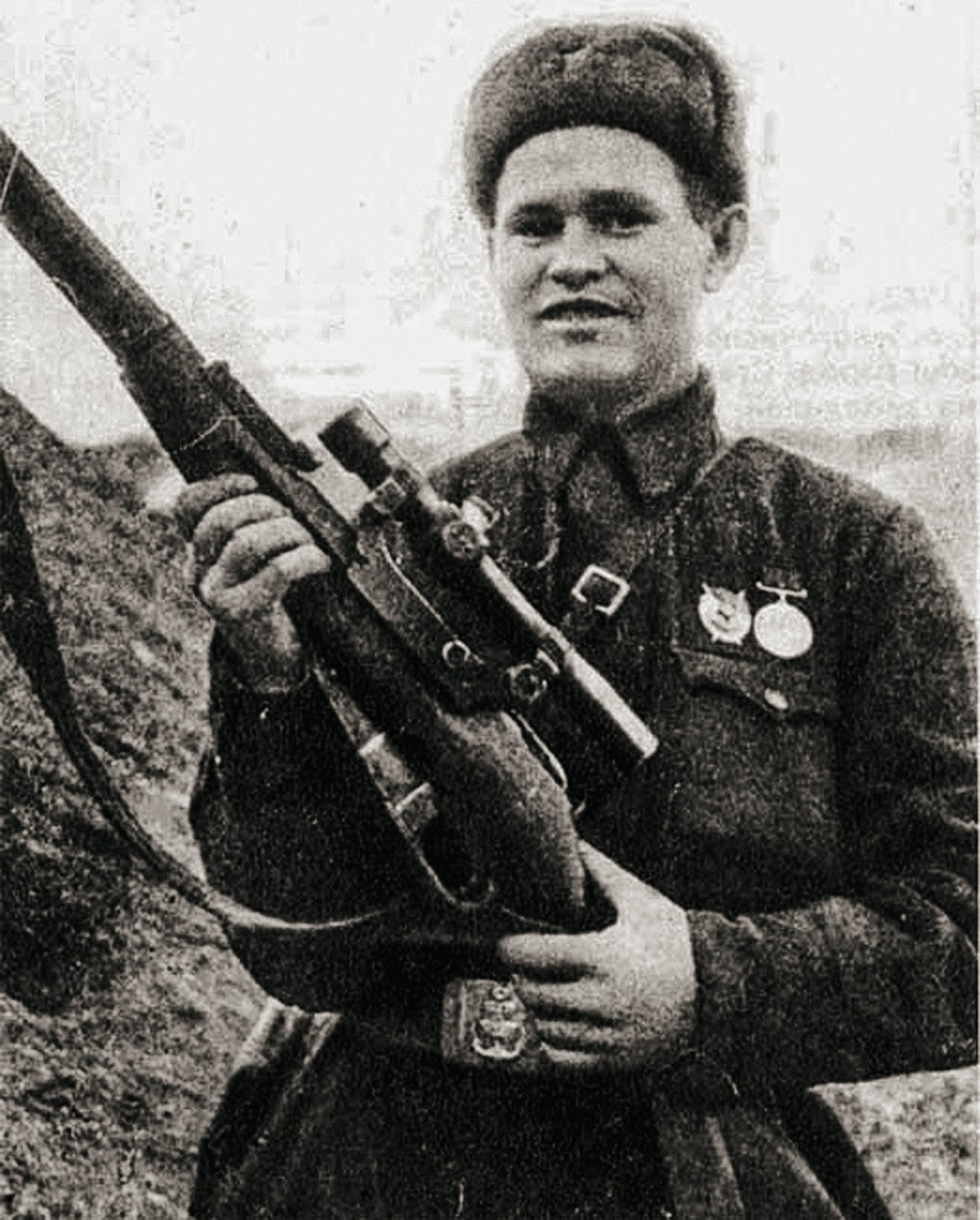
Vasili Zaitsev in the 1940s, displaying his rifle and his medals. Photo courtesy of Wikimedia Commons.
The events of the movie mainly center on Zaitsev’s ongoing “duel” with the head of the German sniper school, Maj. Erwin Konig. But historians hold conflicting positions on whether this supposed skirmish was anything more than Soviet propaganda.
There are no official Nazi records indicating the existence of an Erwin Konig, let alone his leadership role at a sniper school; besides, Berlin had no sniper school predating the Battle of Stalingrad. According to German records, the most successful German sniper was Matthaus Hetzenauer, with 345 kills. Konig’s supposed 400 kills would be more than enough for the record books, had he existed.
Zaitsev tells the Konig story in his autobiography, Notes of a Russian Sniper, published in 1956. But he doesn’t consistently use the same name, at one point referring to Konig as Heinz Thorvald. The Craig book Annaud used as the basis of his film refers to a “super-sniper” named “Major Konings,” a further indication that the man may be pure fiction.
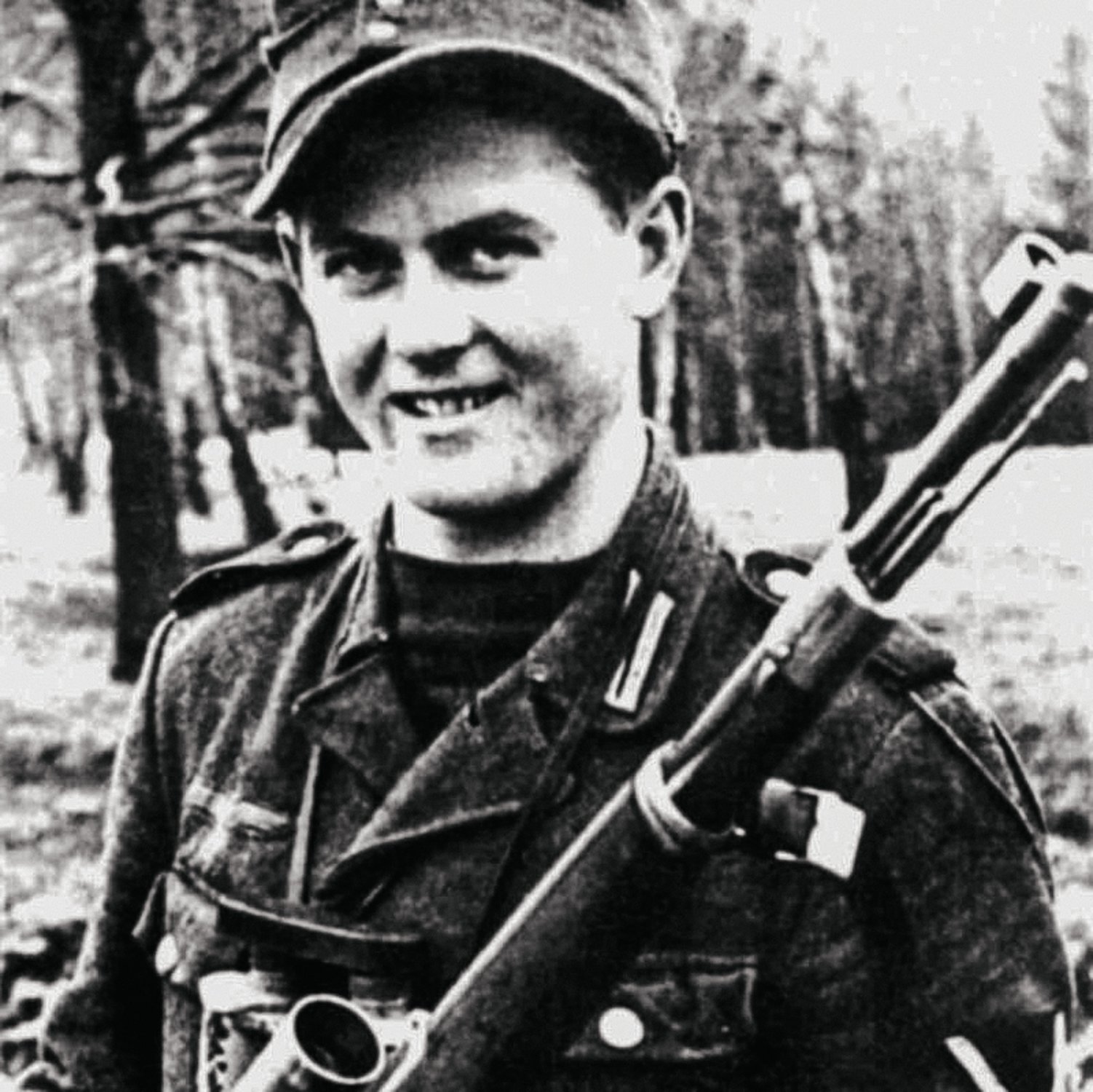
Austrian sniper Matthaus Hetzenauer is credited with the most kills of any Nazi sniper. There are no traces in the historical record of a sniper named Erwin Konig. Photo courtesy of Wikimedia Commons.
As a member of the Bolshevik party after the war ended, Zaitsev was in a perfect position to spread tall tales glorifying the nation’s awesome military capabilities during “The Great Patriotic War,” as the battles on the Eastern front are still known in Russia today. He studied engineering and became director of a textile factory in Kiev. He died Dec. 15, 1991, shortly after the demise of the country he fought valiantly to defend and that capatpulted him to the highest pinnacle of military fame.
Love Interest or “Fantasist”?
Tania Chernova, meanwhile, was indeed a real person — William Craig interviewed her for his book. An American of Russian-Jewish descent, she was in Belarus to rescue her grandparents when the Germans invaded. Chernova had headed toward the Eastern front and joined a local militia to fight the Germans, referring to them as “sticks” because she enjoyed breaking them.
According to Craig, Zaitsev trained her as a sniper and they began a relationship but were separated after his mortar injury. Chernova believed he had died and didn’t find out until 1969 that he had survived and had married someone else. “The news stunned her for she still loved him,” Craig wrote.
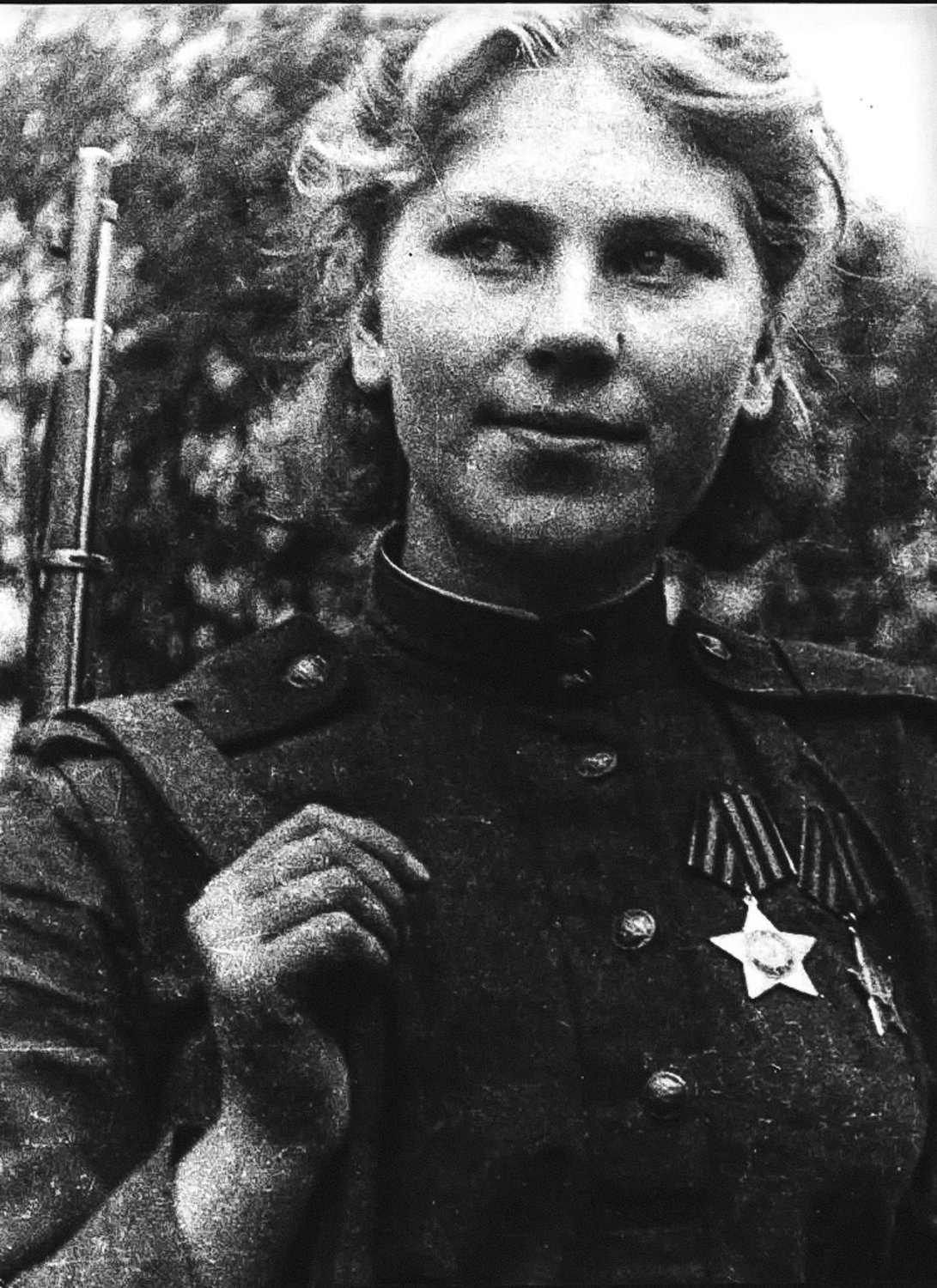
While the love triangle in the movie was not real, Tania Chernova was. But historians question how many of her claims are true. Photo courtesy of Wikimedia Commons.
British historian Antony Beevor, who wrote an entire book on the Battle of Stalingrad, has called her a “fantasist,” saying there were no female snipers at Stalingrad. Again, it is hard to determine what stories were propaganda, if not straight-up fictions, fed to credulous biographers such as Craig and, later, Annaud.
“Where Myth Begins and Truth Ends”
“I was fascinated by the true anecdote on which the story is based,” Annaud told Salon shortly before the film’s release. “That duel is extraordinarily famous in Russia. And Vassili Zaitsev is a national hero there. It has all the resonance of a lonely man fighting against the devil.
“That's why it captivated the imaginations of the Russians, and captivated mine.”

Vasily Zaitsev (Jude Law) with his camouflaged M91/30 rifle. Screenshot from imfdb.
But once the film came out, it was pilloried by historians who knew how unlikely it was that the story was true. When Annaud invited a highly critical Antony Beevor to a screening of the film, Beevor explained to Annaud all the evidence that Zaitsev’s exploits were exaggerated. Konig, or Konings, or Thorvald, or Thorwald — whatever his name, he was almost surely fictional. According to Beevor, Annaud’s response was, “But Antony, who can tell where myth begins and truth ends?”
Annaud explained his logic to Salon: “You have the old Vassili Zaitsev who, 10 years ago, stood in front of BBC cameras in Volgograd at the place he said he killed this German. He spent his whole life writing and doing interviews about this duel, which was at the epicenter of his fame. So it's difficult for me to say it's untrue.” Indeed, what reason would a Soviet war hero and vocal Bolshevik have to not come clean about the fact that his fame may have been a lie?
The echoes of the Soviet propaganda system are on full display during today’s war in Ukraine, on both sides. As we continue to consume 21st-century media, it would be in everyone’s best interest to think more critically about the sources of their information and what those parties stand to gain from how those stories are told. The story told by Enemy at the Gates makes that clear, but so does the fact that the war film was even made in the first place.

Maggie BenZvi is a contributing editor for Coffee or Die. She holds a bachelor’s degree in political science from the University of Chicago and a master’s degree in human rights from Columbia University, and has worked for the ACLU as well as the International Rescue Committee. She has also completed a summer journalism program at Northwestern University’s Medill School of Journalism. In addition to her work at Coffee or Die, she’s a stay-at-home mom and, notably, does not drink coffee. Got a tip? Get in touch!
BRCC and Bad Moon Print Press team up for an exclusive, limited-edition T-shirt design!
BRCC partners with Team Room Design for an exclusive T-shirt release!
Thirty Seconds Out has partnered with BRCC for an exclusive shirt design invoking the God of Winter.
Lucas O'Hara of Grizzly Forge has teamed up with BRCC for a badass, exclusive Shirt Club T-shirt design featuring his most popular knife and tiomahawk.
Coffee or Die sits down with one of the graphic designers behind Black Rifle Coffee's signature look and vibe.
Biden will award the Medal of Honor to a Vietnam War Army helicopter pilot who risked his life to save a reconnaissance team from almost certain death.
Ever wonder how much Jack Mandaville would f*ck sh*t up if he went back in time? The American Revolution didn't even see him coming.
A nearly 200-year-old West Point time capsule that at first appeared to yield little more than dust contains hidden treasure, the US Military Academy said.












